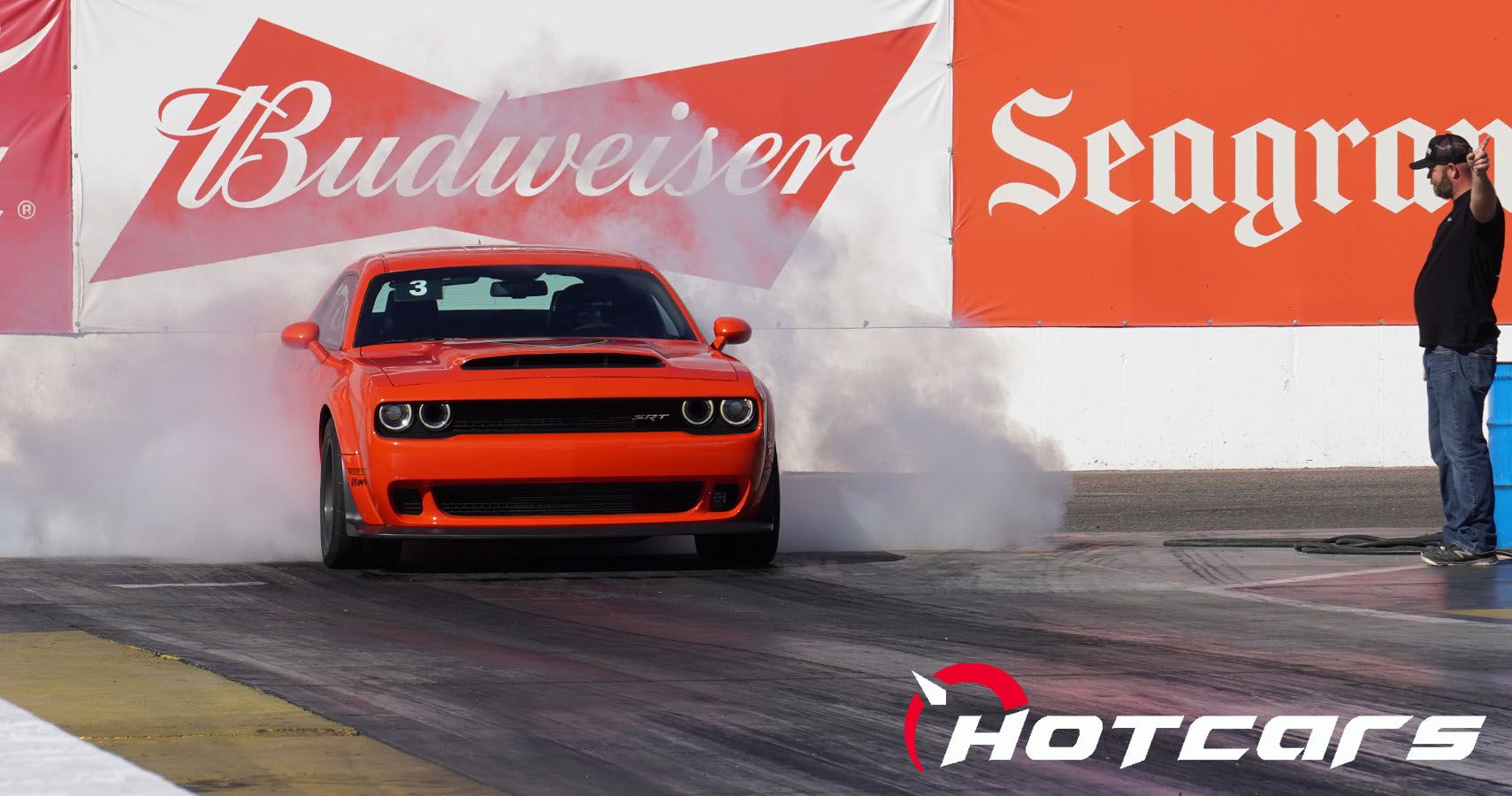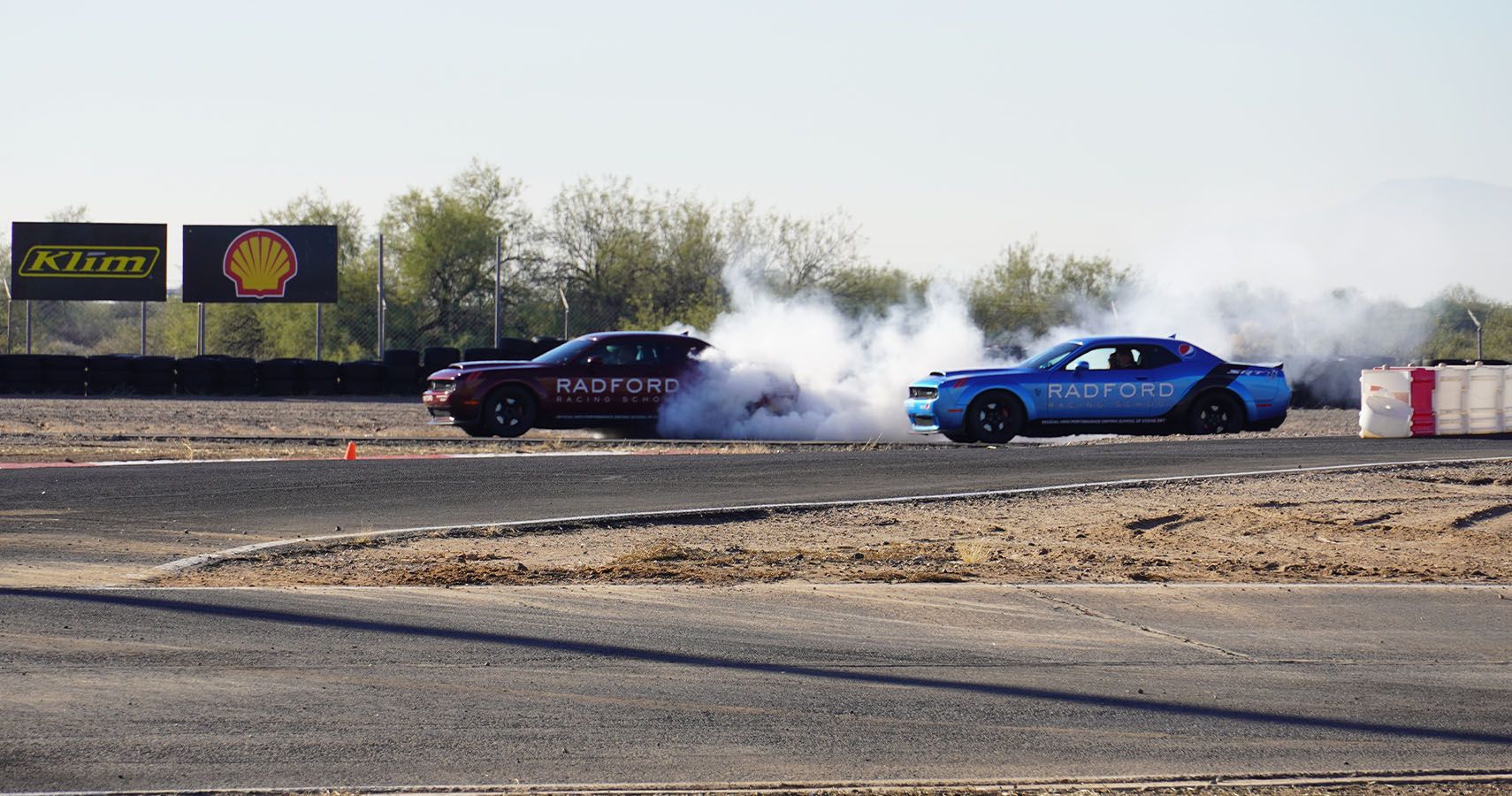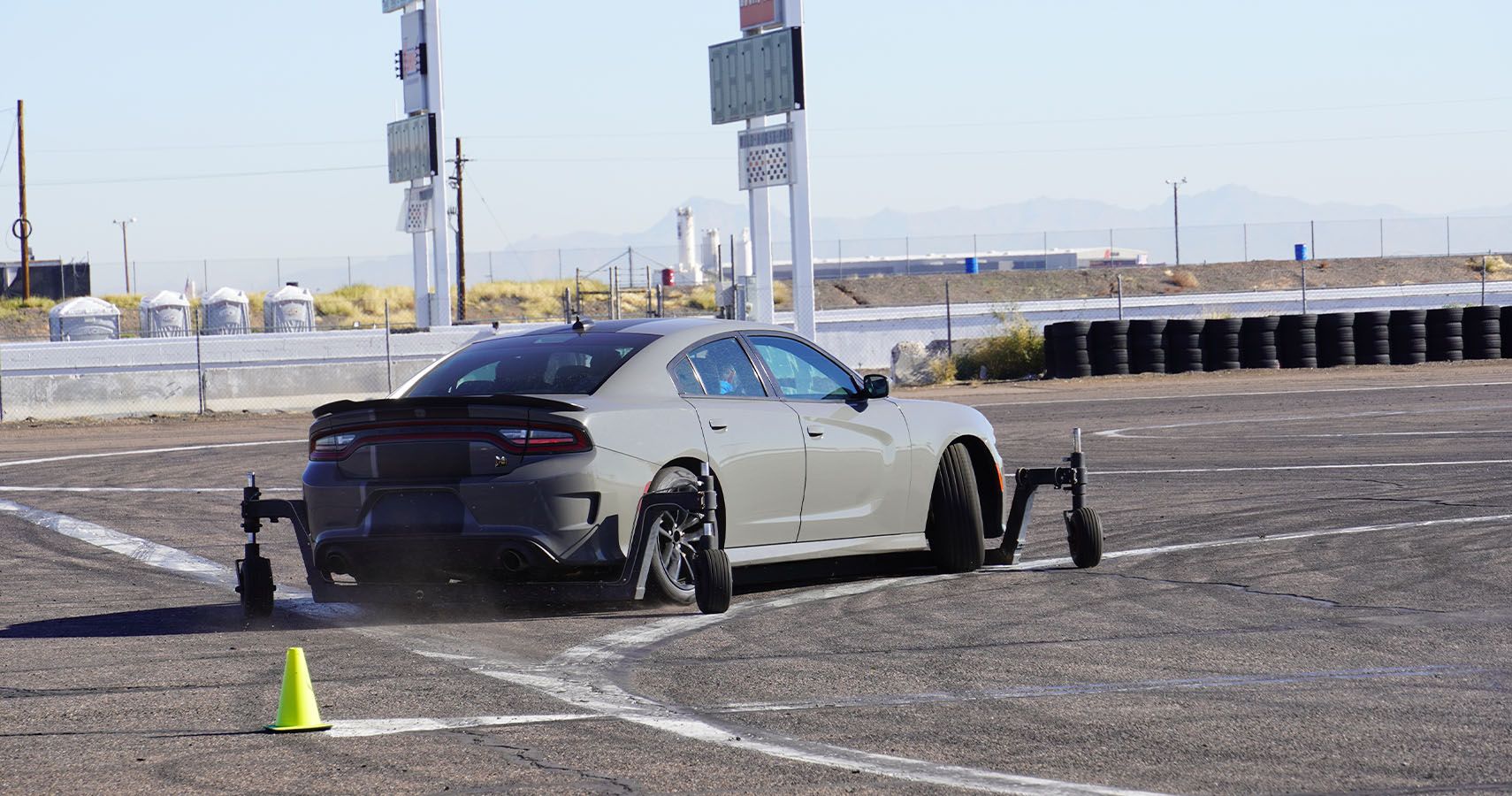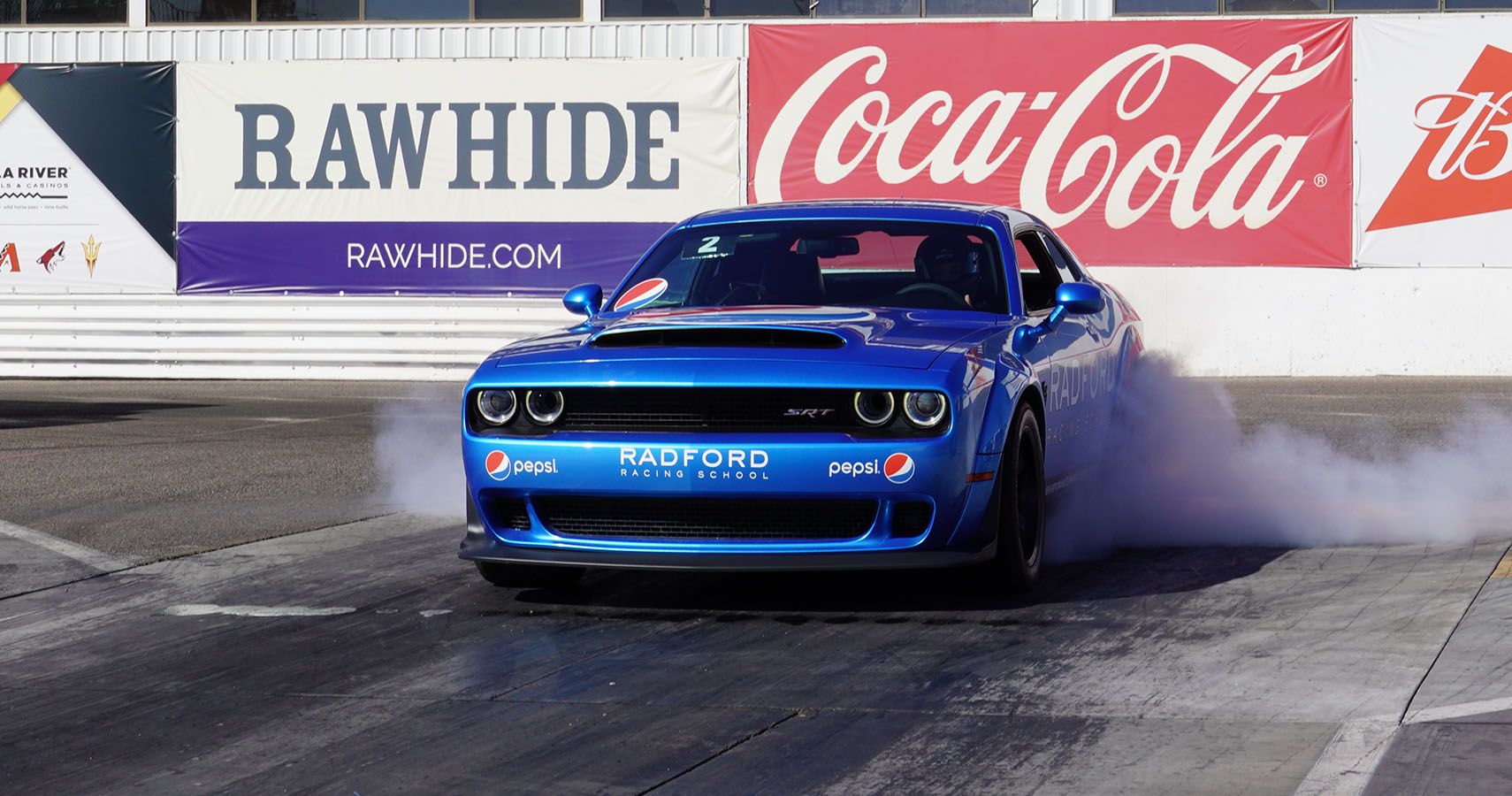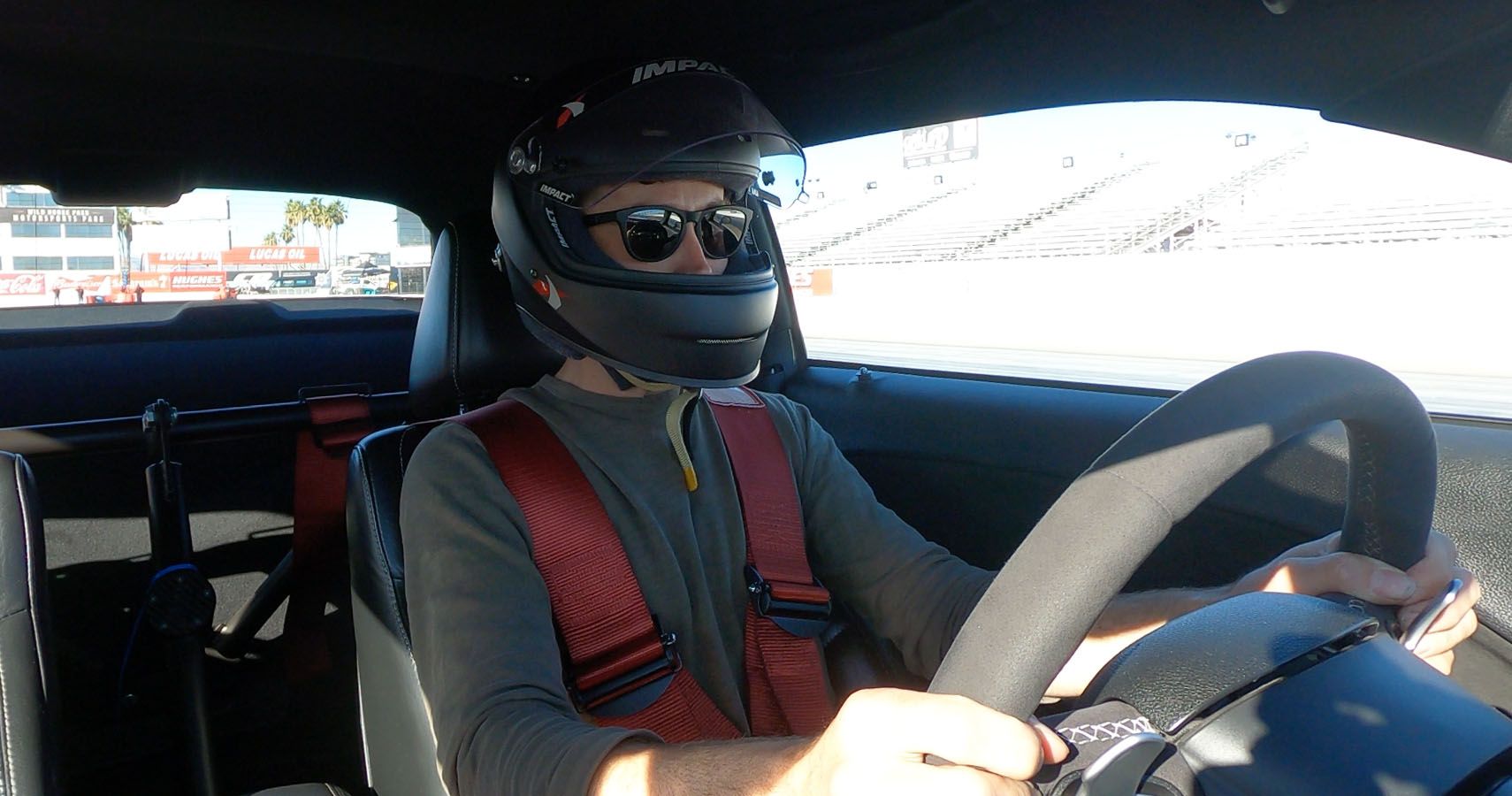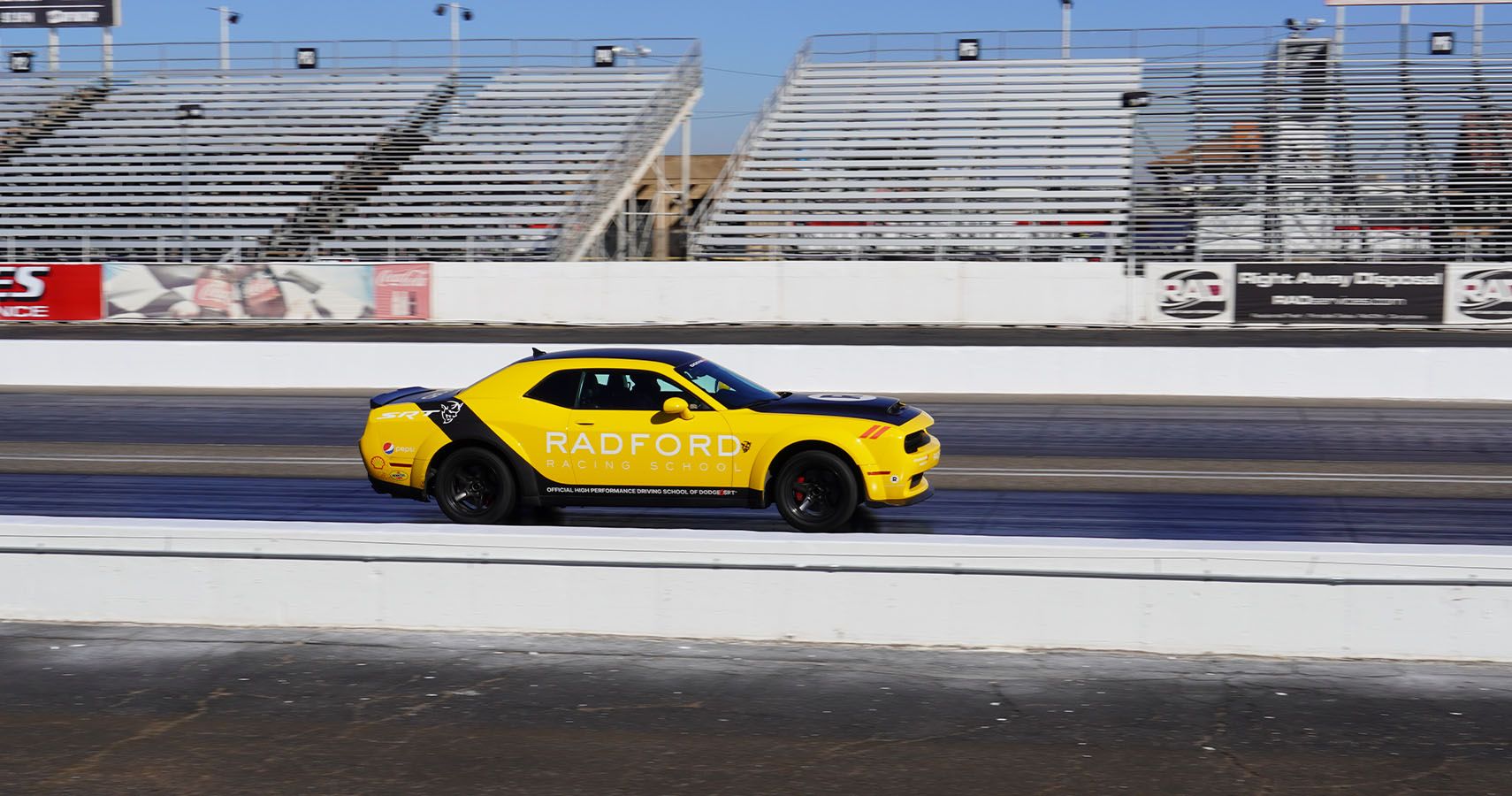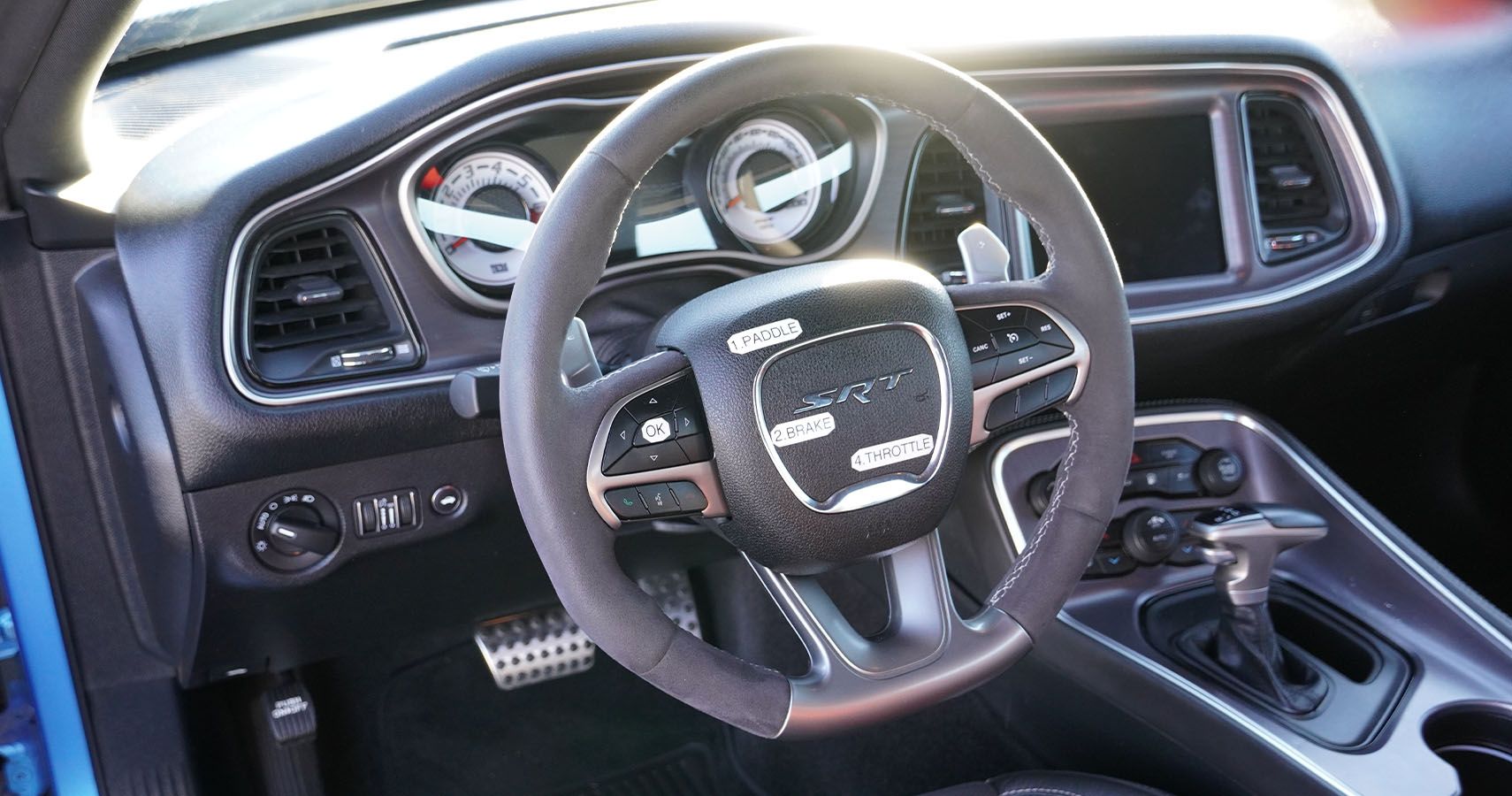To wrap up my full week at Radford Racing School in Chandler, Arizona, Friday sounded like an absolute blast drag racing the iconic Dodge Challenger SRT Demon. I spent the four days beforehand as a student in the Grand Prix road racing course, which left me bruised and battered in the best way possible after jumping from a Challenger Hellcat Widebody to a Viper GT to a Lotus Evora GT and finally, a legit Ligier Formula 4 racecar with zero driver aids.
The GP class helped me refine (and really, relearn) the techniques I first discovered while carving canyons around the hills of Malibu and the Angeles Crest throughout my automotive lifetime, though I also looked forward to honing some straight-line skills in the most hardcore street-legal factory drag racer of all time. Radford owns multiple Demons and pulled out four for our one-day class, as instructors Chuck Sundstrom and Josh Edwards took us through all the racing-specific technology that helps these 840-horsepower modern muscle cars launch off the line so well.
A deal with the NHRA also means that Radford students can opt to shoot for their official NHRA 9 Second License, though they'll have to prove capable of a good enough pull by the end of the day. And as easy as drag racing might look from afar, I quickly discovered how much practice it takes to successfully harness all that power in real life.
Welcome To The Dodge Demon
Straight from the factory, the limited-edition Dodge Demon offers up to an absurd 840 horsepower, or 808 ponies when the 6.2-liter supercharged V8 feeds on pump gas. Throw in goodies like Line Lock, a Transmission Brake, and weight savings and the Demon can log a 2.1-second sprint to 60 miles per hour—not bad for a 4,280-pound bone-stock behemoth. Radford installed parts of the famous Demon Crate package on the cars we drove, though not the skinny tires because students learning to steer in the case of a tailspin definitely need all the front-wheel grip possible. But achieving that claimed 0-60 time or a quarter-mile in the 9.6-second range requires a perfect launch, which is exactly what Sundstrom and Edwards needed to teach us in a single day.
Practicing Line Lock
After a quick primer in the classroom, we headed straight out to the waiting Demons for a little demonstration of what the Line Lock and Trans Brake features do—and how to operate them via paddles and buttons on the steering wheel and center console. Sundstrom hopped in the driver's seat with me first, activated Line Lock, and then hit the throttle to smoke the rear tires. As great as a burnout looks (and smells), though, he explained that the goal here is to warm up the tires and get them good and grippy. Once we got over to the actual drag strip, using Line Lock in the water box would do an even better job of heating up that rubber.
The Demon makes Line Lock easy. Sundstrom activated the feature on the infotainment screen, then pushed down on the brake pedal harder than hard until the gauge cluster read above 1,300 PSI of brake fluid pressure. He then locks a solenoid in the brake system with a button on the steering wheel that keeps the front brake pads set at that pressure while the rears let loose. Mashing the throttle then gets the Demon bumping and roiling, smoke starting to swirl around the angry rear tires as they warm up to operating temp.
Next, Sundstrom showed off the Trans Brake, which requires holding the paddle shifters on the Demon's steering wheel and allows the engine to rev up without the gearbox sending power to the rear wheels. Release the paddles and boom, launch control!
Safety First
But before we could give the Line Lock and Trans Brake a go on the strip, Radford makes sure all students know how to handle a burnout or loss of rear traction in an aggressive oversteer situation. On the by-now familiar skidpad that I visited multiple times throughout the week, Sundstrom took us through donuts and figure-eights with two Dodge Chargers on training wheels. Again, we learned how to countersteer but the most important lesson involved keeping our eyes up—in the case of drag racing, he advised us to always keep our vision focused straight down to the end of the strip.
First Trip To The Drag Strip
And then we drove the Demons over to their native habitat, the drag strip. Sundstrom gave us a little explanation of the stop-and-go lights, which drag racers affectionately refer to as the "Christmas Tree," plus how to stage by putting our front tires between the lasers that officially time the entire process. I can admit this marked the first time I ever set foot on a drag strip, and I kept checking out the grip compound and rubber laid down on the ground about an eighth of an inch thick—no wonder the tires always squeal like crazy in the videos on YouTube!
Modulating Throttle Input
But even with that traction compound, we still needed to use the Line Lock to warm up our tires in the hopes of logging the best times possible. Edwards manned the water box, reminding us of how to activate the feature and then helping us time our tire-shredding perfectly. He told me that a set of rears on a Demon last about three classes of 16 pulls (two students trade off four runs at a time). Luckily, Radford cornered the market for Nitto's Demon-specific NT05 R street tires—with the Demon logo, of course—and we didn't use full-drag spec rubber for the class.
I scorched the rear tires as best I could, then inched forward (probably too slow, since I needed to remember how to set up the Trans Brake) until my front wheels started the staging process. My first launch went less than optimally, as I probably gave too much throttle too early and ended up losing rear traction for too long. Luckily, my vision and confidence from the skidpad carried over and I kept the Demon in a relatively straight line, but the big car's weight shifted too far forward and my end time in this first eighth-mile pull correspondingly suffered.
One Good Launch
Radford's drag class gives each student eight pulls. For those trying to earn the NHRA 9 Second License, that translates to four eighth-miles and four quarter-miles (and maybe one extra if someone gets close but not quite into the nines and needs a final shot). Over the course of the afternoon, I probably logged one really solid launch, with lighter throttle off the line that hooked up the rear tires immediately and sent all the Demon's horsepower and torque to the ground, pressing me back into the plush seat for a screaming rip down the strip. In the quarter-mile, after pushing the H.O. button on the center console, I started getting closer and closer to 140 miles per hour in the quarter-mile. And finally, I cracked into the nines!
Drag Tech Vs Two Feet
For the last two launches, in fact, Sundstrom and Edwards changed things up: instead of using the Trans Brake, we used an old-fashioned two-foot technique with our left foot on the brake and right foot on the gas. Edwards said that this actually allows for the best times, since timing the process right allows the engine to already be revving up, rather than sitting at a steady RPM with the Trans Brake activated. But using two feet also requires practice, almost like using a clutch pedal in a new car. Regardless of the method, though, the same lessons apply when driving a Dodge Demon. Keep those eyes up, roll into the throttle rather than stomping on the pedal, and time the launch as best as possible.
By the end of the day, I earned my NHRA 9 Second License and felt a bit more at home in the radical Demon. To a certain extent, the leather seats and air conditioning (which actually turns off when the car preps to drag race in the hopes of keeping the engine running more efficiently) helped make the day feel easier than, for example, the heavy workout of driving a Ligier F4 racer. But as usual, after a day at Radford, I felt my brain processing everything I learned throughout the rest of the evening and night, crunching the hours of experience into lessons that will stick with me for the rest of my career behind the wheel.
Drag racing certainly proved more difficult than I expected but now, I can confidently head to any NHRA strip and continue to hone my skills—even if I don't usually have a Dodge Demon to drive. And the experience of hard pulls off the line while utilizing car control and vision techniques to keep that power in check will come in handy more and more often these days, since any four-door Tesla commuter car can now drag race with the best cars in the world.
Sources: radfordracingschool.com, nhraracer.com, youtube.com, and ligierautomotive.com.

